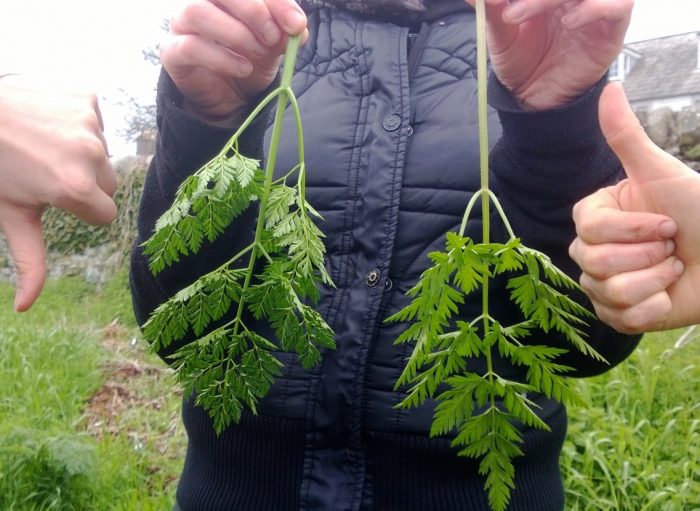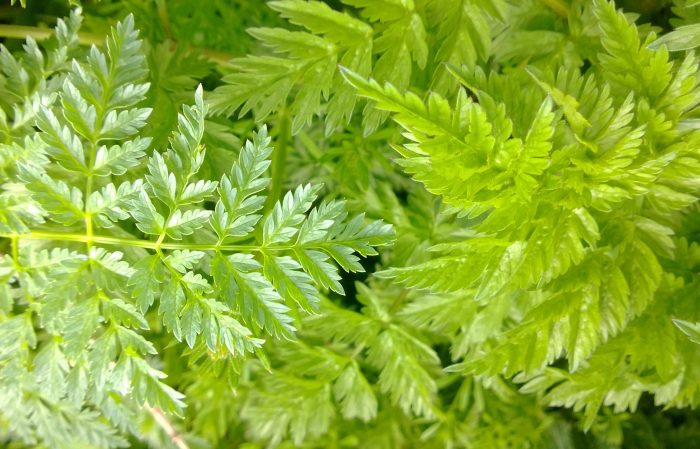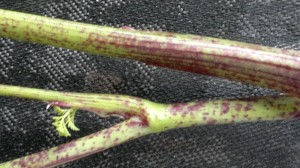Cow parsley – identification, edibility, distribution, comparison with Hemlock
Anthriscus sylvestris
Cow parsley AKA Wild chervil, Queen Anne’s Lace
- Edibility – Leaves 3/5, Young flowering stems (peeled) 4/5, Seeds 1/5
- Identification – 1/5 – Take extreme care if you intend to eat cow parsley. It is a member of the carrot family, many of which share similar umbeliferous white inflorescences and several times pinnate leaves. This includes deadly species such as hemlock and hemlock water-dropwort, which can grow alongside it. Always confirm your identification against several key features and discard if you are not 100% of what you have. Read more: An Introduction to the Carrot/Apiaceae Family for Foragers.
- Distribution – 5/5 – Extremely common
- Season – basal leaves best Jan – May, Shoots April – May (they have quite a short window of succulence)
- Habitat – roadside verges, wood edges, river banks, wild meadows
Cow parsley is the predominant roadside umbelifer from March through to June, when its delicate, nodding white flower umbels adorn nearly every rural roadside in the UK like fine living lace – hence the old name of Queen Anne’s Lace. By the time they have flowered however, the leaves are past their best for eating, though still palatable as a pot herb.
The young basal leaves taste, as you might expect, like a strong version of parsley, and can be used in similar ways.
Be extremely cautious if you are trying to identify cow parsley from its basal leaves alone. I recommend familiarising yourself with a nearby patch through at least one full growing season before even thinking of eating any. Even then proceed with extreme care, as the leaves are very similar to poison hemlock (conium maculatum).

Hemlock, Left v Cow Parsley Right. Would you stake your life on recognising the difference from these leaves alone?
Identification of any member of the carrot family should be based on a minimum of three clearly identifiable features. I take you through this process and how to develop confidence identifying more members of this challenging family in my Introduction to the Carrot Family for Foragers. I suggest you read it to get a fuller idea of the benefits and dangers of this extremely prolific plant family.
I suggest that, unless you are a botanist, you initially ignore both leaf and flower structure when trying to distinguish cow parsley from poison hemlock. What I look for to feel sure I have cow parsley are:
- Cow parsley is hairy (very fine, very short, velvet-like hairs, sometimes hard to see but always giving leaf stems and flowering stems a rough feel). Hemlock is entirely free of hairs – they will feel smooth. This is your most useful comparison, but don’t make it the only one!
- Cow parsley has U shaped leaf stems (or more like a D on its side). Hemlock has rounded leaf stems, though these do form sheaths near their base.
- Cow parsley leaf stems and flowering stems tend to be greenish – purple, sometimes entirely purple, but they are NEVER blotchy. Hemlock flowering stems are blotched with purple, though the blotches can be minimal, occasionally absent, especially when young.
- Cow parsley leaves smell of parsley if you crush them in your fingers. Hemlock leaves smell a bit unpleasant – a little acrid/ammoniac (often described as “of mouse pee”, though I doubt many people know the smell of mouse pee nowadays!). Clearly smell is subjective, but it can be a useful part of your ID toolkit given some practice and experience.

One of these leaves is hemlock, the another cow parsley. Don’t play Russian roulette with plant ID! Look for more features!
For me, the real delight of cow parsley comes over a short 2 to 3 week window (around the second half of April in SW Scotland) when the young flowering stems rapidly push their way up from the basal leaves. These are crisp and juicy after light peeling (they peel very readily, eager to give up their gifts!). They are one of my favourite hedgerow snacks in late April. Most plants produce a few of these stems, so its only manners to take just one from each plant you visit. They are a really great vegetable in the kitchen too – steamed, stir-fried, added to salads or as a delightfully crisp crudite…maybe for dipping in wild garlic pesto..? Cheffy types could certainly pipe nice things into their hollow tubes.

Cow parsley stem. Note the HAIRY (like velvet) , GROOVED flowering stem that while having some purple colouration, is NOT BLOCHY.
Related Pages:





4 Comments
Hi there,
I thought Queen Anne’s Lace was another name for Wild Carrot…..not Cow Parsley?
Kind Regards,
Andrea.
Quite a lot of the carrot family get given this name. Personally I think it best suits wild carrot for the red (blood) flower in the middle of the umbel, but it certainly also gets widely applied to cow parsley
Thanks for the feedback Mark,
How confusing!
Kind Regards,
Andrea.
I knew Cow Parsley as Queen Anne’s Lace as a child in rural Lincolnshire. Thanks for this ID guide, Mark. Very helpful.